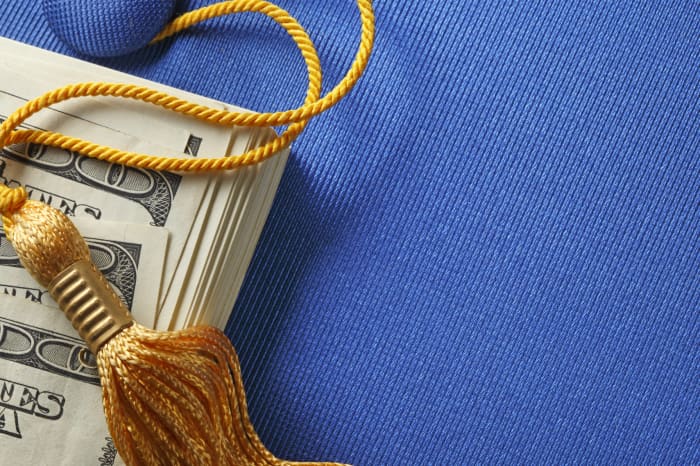‘I couldn’t even use the degree.’ I racked up $80K in student loans, but only make $40K a year. How to get out of student loan debt faster

Question: “I have high student loan debt, about $80,000 in total. When I got the loans, I thought I’d be paying a lot less than I ended up paying. Even worse: I couldn’t even use the degree. Now I make only $40,000 a year, and I’m the only person working in my household. The loans are on pause now, but I am worried when that stops. I need help trying to figure this out.”
Need help with student loans or other debt?
Email [email protected].
Answer: Like a lot of students who have enjoyed a pause on their federal student loans — as part of the coronavirus relief package, the government suspended loan payments, incited a 0% interest rate and stopped collections on defaulted items — you see the end is near. The program is set to end January 31, 2022, and you’re worried. The first thing to know is you’re not alone: The average student loan borrower has more than $36,000 in debt, according to the Education Data Initiative. The good news? You do have options to help you manage the debt. Here’s what you may want to consider.
The first thing to do is contact your loan servicer to talk about what your options are if you’re struggling. One good option for you may be to look into income-driven repayment plans for your federal loans (details here). “If the amount you owe and your monthly payment feels unmanageable, [a good] option is to contact your servicer about enrolling in an income-driven repayment plan. This will cap payments at a portion of your income and extend your repayment to 20 or 25 years. After the term ends, the remainder is forgiven,” explains Anna Helhoski, NerdWallet’s student loan expert. There are other repayment plans for federal loans (details here) that you may want to consider.
Loan forgiveness may be an option, too, says Lee Busby, a financial wellness program manager at Johnson Sterling. Indeed, if you work in public service — employed full-time by a U.S. federal, state, local or tribal government or non-profit organization — and your student loan debt is federal, you could seek public service loan forgiveness. There are other ways to get loans forgiven too, which you can learn about here, including forgiveness options for some teachers, and some in the medical field and military. What’s more, more people are now eligible for loan forgiveness thanks to new policies by the Biden administration. Some employers also have some student loan relief as part of their benefits package.
Another option for those struggling with student loan debt? “You can also refinance private loans into lower interest rates if you can qualify for them,” says Busby. Indeed, interest rates on student loan refis are very low now (some start below 2%), and a lower interest rate can mean significant savings for a borrower, as well as the opportunity to change repayment terms and choose a new lender. But note that refinancing has downsides: If you refi federal loans, for example, you should potentially forfeit federal protections such as deferment, forbearance or income-based repayment, so think very carefully before you do that. There are potential other downsides too. Read the MarketWatch Picks guide to refinancing your student loans here.
*Questions edited for clarity




